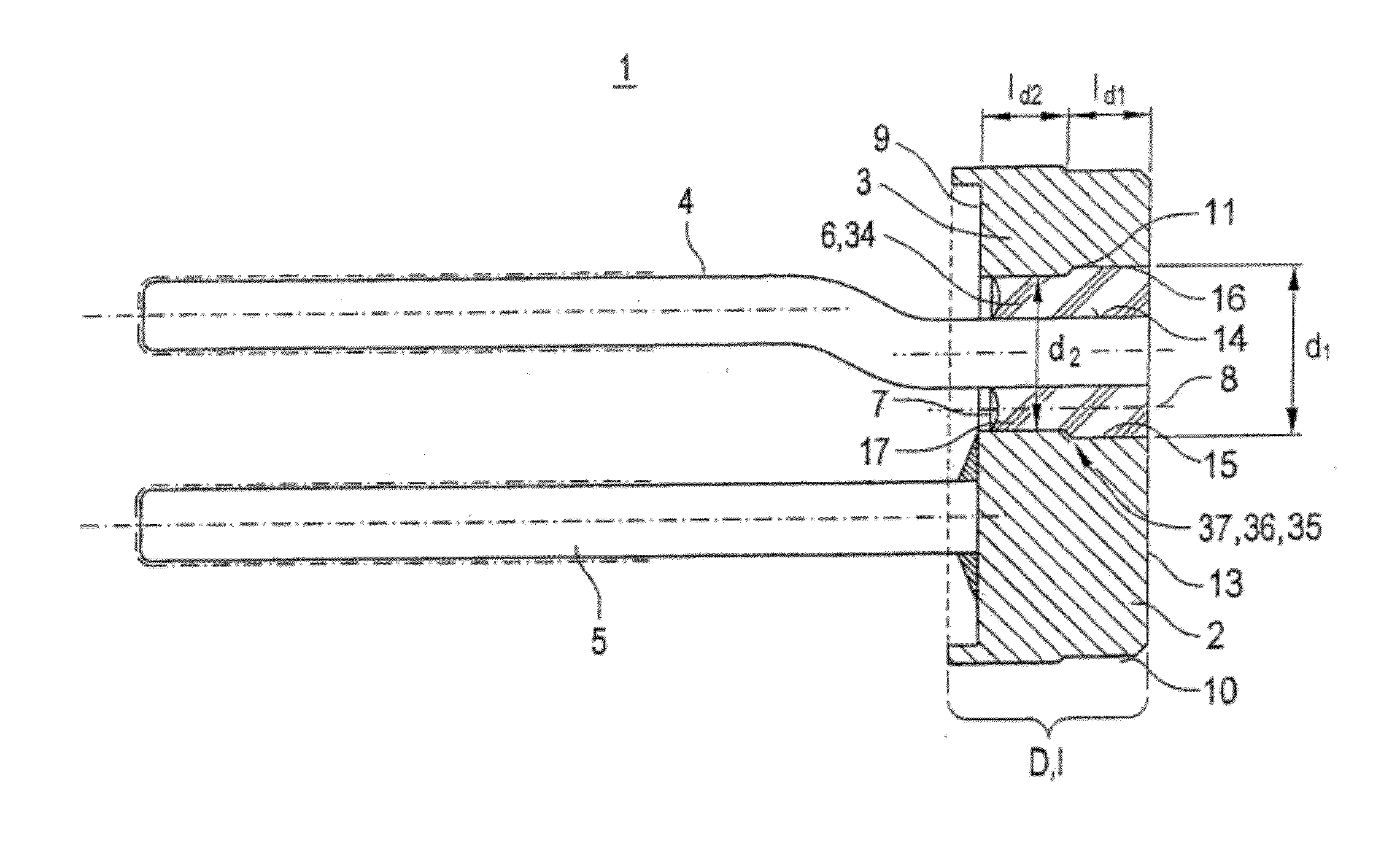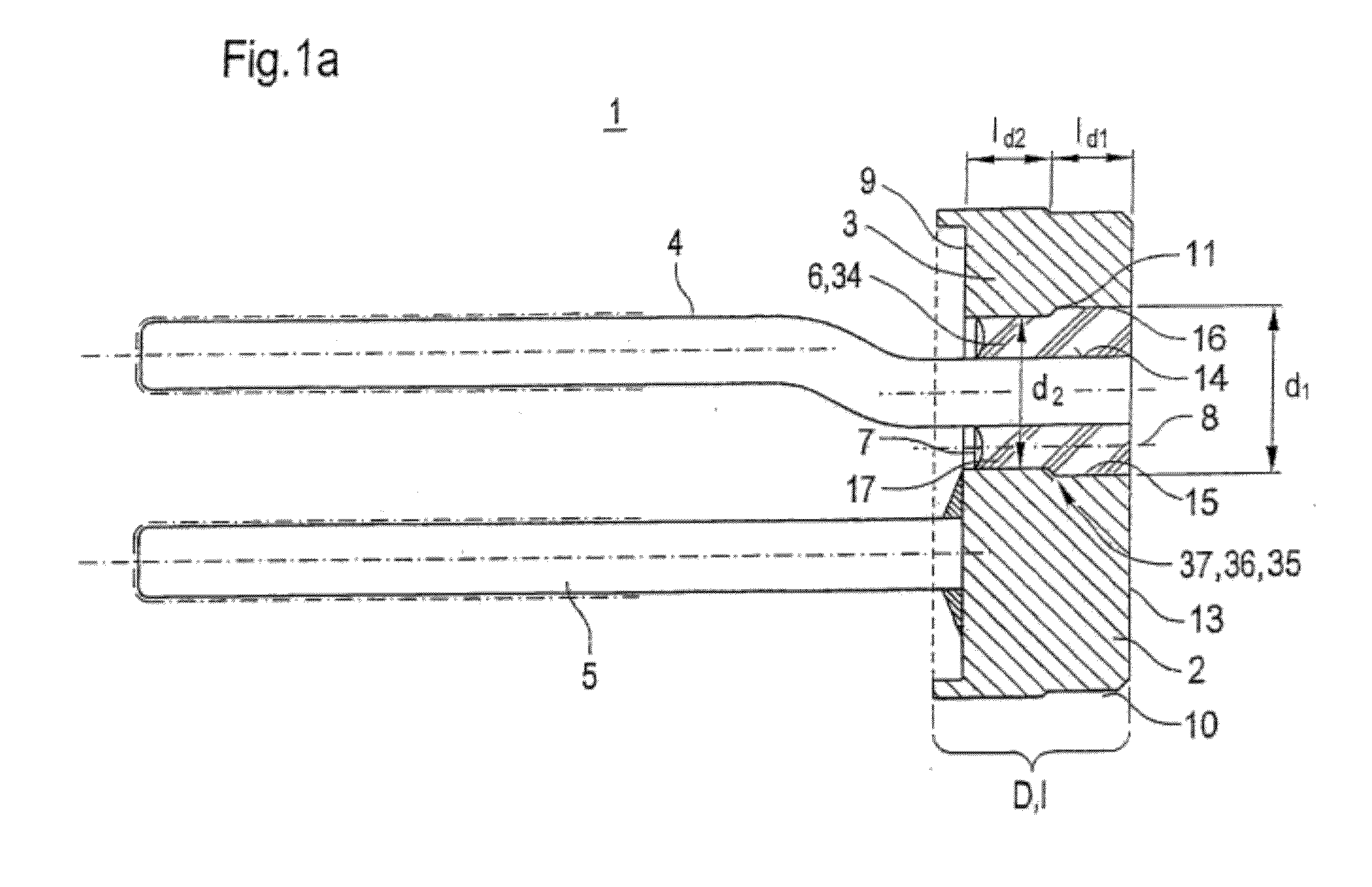Metal-sealing material-feedthrough and utilization of the metal-sealing material feedthrough with an airbag, a belt tensioning device, and an ignition device
a technology of metal sealing material and feedthrough, which is applied in the direction of engine sealing, pressure gas generation, weapons components, etc., can solve the problems of uneconomic fabrication, material intensive and expensive construction types, and the limit of punching fabrication, so as to reduce the support surface of sealing material slugs, save materials, and save energy.
- Summary
- Abstract
- Description
- Claims
- Application Information
AI Technical Summary
Benefits of technology
Problems solved by technology
Method used
Image
Examples
Embodiment Construction
[0058]Referring now to the drawings, and more particularly to FIG. 1a, there is shown, with the assistance of an axial section, a first design of an inventively constructed metal-sealing material-feedthrough 1, which can be used as an igniter or an ignition device of an airbag. This includes a base body 3 forming a metal collar 2 with which two parallel metal pins 4 and 5 are electrically connected. The two metal pins 4 and 5 are located parallel to each other. One of said metal pins functions as a conductor while the second one is grounded. In the illustrated example the first metal pin 4 functions as conductor and the metal pin 5 as grounding pin. At least one of the metal pins, especially the one metal pin 4 functioning as conductor is inserted through the base body 3. In this context the metal pin 4 is sealed over a section of its length 1 in sealing material 34, especially in a glass slug 6 which is cooled from a molten glass mass. In the illustrated example the metal pin 4 pro...
PUM
| Property | Measurement | Unit |
|---|---|---|
| thickness | aaaaa | aaaaa |
| thickness | aaaaa | aaaaa |
| thickness | aaaaa | aaaaa |
Abstract
Description
Claims
Application Information
 Login to View More
Login to View More - R&D
- Intellectual Property
- Life Sciences
- Materials
- Tech Scout
- Unparalleled Data Quality
- Higher Quality Content
- 60% Fewer Hallucinations
Browse by: Latest US Patents, China's latest patents, Technical Efficacy Thesaurus, Application Domain, Technology Topic, Popular Technical Reports.
© 2025 PatSnap. All rights reserved.Legal|Privacy policy|Modern Slavery Act Transparency Statement|Sitemap|About US| Contact US: help@patsnap.com



